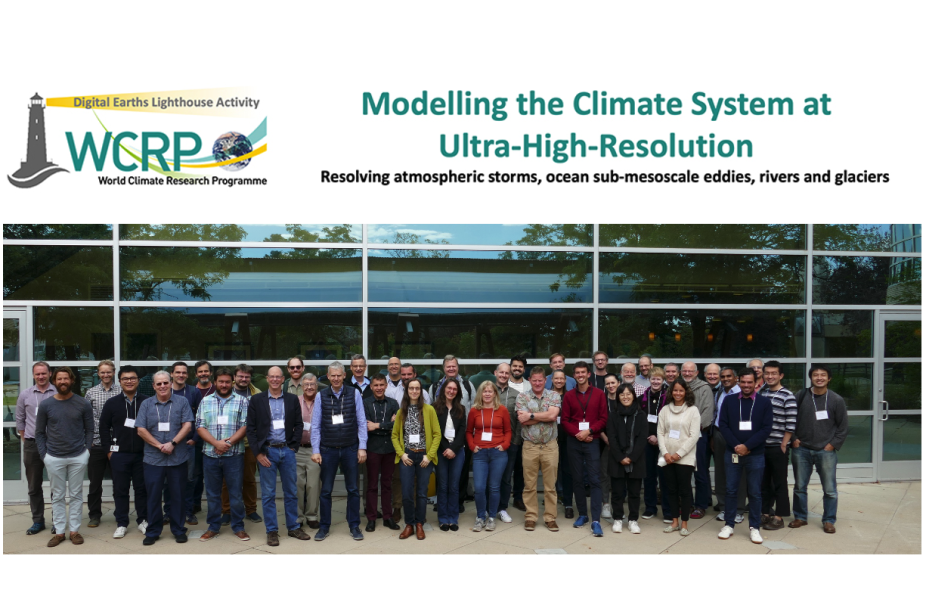WCRP Workshop
2022
Webcast
The WCRP Digital Earths Lighthouse Activity and Earth System Modelling and Observations (ESMO) Core Project are jointly convening a workshop to bring together all relevant communities interested in ultra-high-resolution modelling.
The workshop is planned to be in person from October 3-7, 2022 at the National Center for Atmospheric Research (NCAR) in Boulder, CO, U.S.A. Public health regulations permitting. Important dates are:
- Abstract submission deadline: September 14, 2022
- Registration deadline: September 20, 2022
For remote participants, we will make the recordings of the talks available on this website and we will host two online breakout sessions. You can register for an online breakout session using the Google form.
This workshop is motivated by the urgent need for improved climate information and the major advantages and scientific potential of ultra-high-resolution climate modeling.
This workshop aims to:
- Bring very high-resolution modellers of different communities (atmosphere, ocean, land, ice but also global and regional) and sub-components (physics and diagnostics) together.
- Raise awareness of scientific and computational issues faced by the various communities when moving to ultra-high-resolution.
- Discuss the applications and use of ultra-high resolution global models by identifying things that we already know do not work or that we anticipate not to work.
- Share current progress in simulating various spheres at ultra-high-resolution and in coupling them.
- Identify key challenges and joint community tasks that can be achieved within one- to two-years.
The intended outcomes include the establishment of a global research network with expertise in ultra-high-resolution (kilometer-scale or finer) global and regional Earth system modelling including its individual components. The workshop outcomes will be documented in a white paper.
Please contact Andrew Gettelman or Andreas Prein with any questions.
Motivation
Climate models aim at simulating the flow of energy and water across the ocean, land, atmosphere and ice caps, but their typical coarse grid spacing of O(100 km) introduces the need to parameterize key processes, source of long-standing model errors and uncertainties. Due to the advancement in computer technologies, a new generation of ultra-high-resolution climate models are appearing. The DYAMOND intercomparison project showed that many modelling groups can now run season-length global atmosphere-only models at kilometer-scale grid spacing, whereas multi-decadal climate simulations at continental-scales are now routinely performed. Many modelling centres are actively developing ultra-high-resolution global earth system models that leverage advances from other modelling communities such as sub-mesoscale ocean eddy models. Current throughput of such ultra-high-resolution simulations indicates that multi-decadal simulations are within reach.
These models allow simulation of the global earth system at a few kilometers that resolve the dominant modes of energy transfer as well as the cycling of water across the land, atmosphere, ocean and ice cap, closer to first principles. This new class of coupled global models is working at the scale of limited temporal weather models and limited area regional climate models. These new global earth system models also come with tremendous challenges, such as operating in the atmospheric turbulent grey zone, large computational costs, and immense output data volumes.
